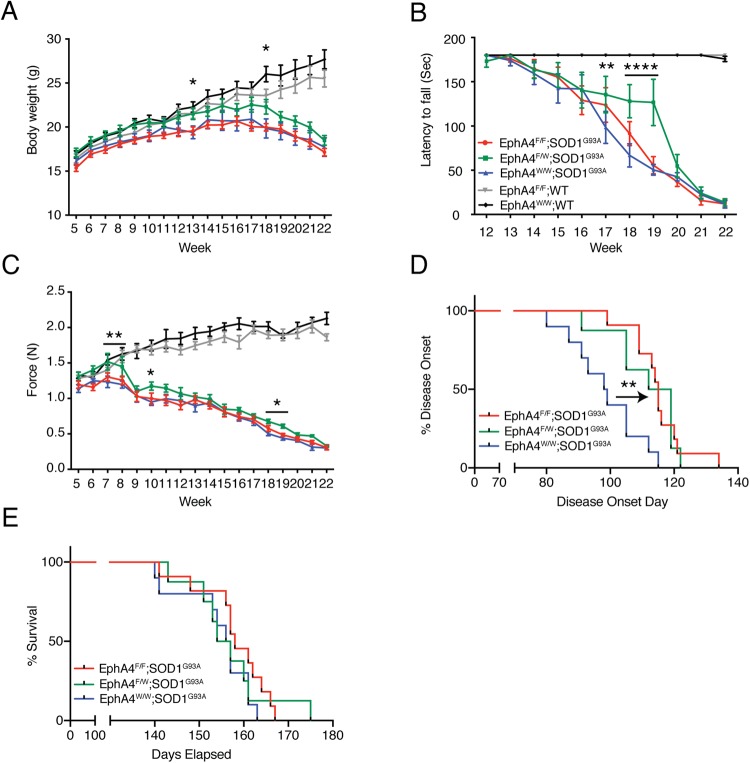Figure 2.
Conditional knockout of the EphA4 gene in SOD1G93A mice improved functional performance, delayed disease onset, but did not affect survival. (A) SOD1G93A mice with heterozygous deletion of EphA4 in ChAT-positive motor neurons were heavier than homozygous deletion mice or normal SOD1G93A mice. Wild-type mice with or without the EphA4 gene exhibited gradual increases in body weight with no significant difference between these two groups. (B,C) Changes over time in (B) rotarod test values and (C) hind-limb grip strength. EphA4F/W; SOD1G93A mice showed better function in both tests compared with EphA4W/W; SOD1G93A mice. In the rotarod test, EphA4F/F; WT and EphA4W/W; WT mice continued to perform at near optimal levels. Additionally, the hind-limb grip strength of EphA4F/F; WT and EphA4W/W; WT mice steadily increased with time until the end-point (two-way ANOVA with Fisher’s LSD test at each age; *p < 0.05; **p < 0.01; ***p < 0.001; ****p < 0.0001). (D,E) Kaplan Meier pots of (D) disease onset and (E) survival time in the three SOD1G93A groups. (D) Both homozygous and heterozygous deletion of EphA4 in ChAT-positive motor neurons in SOD1G93A mice delayed disease onset relative to normal SOD1G93A mice (log-rank test; **p < 0.01). (E) Survival times of each group are not significantly different (log-rank test; p = 0.47). Data are expressed as mean ± SEM; n = 8–11 mice per group.

